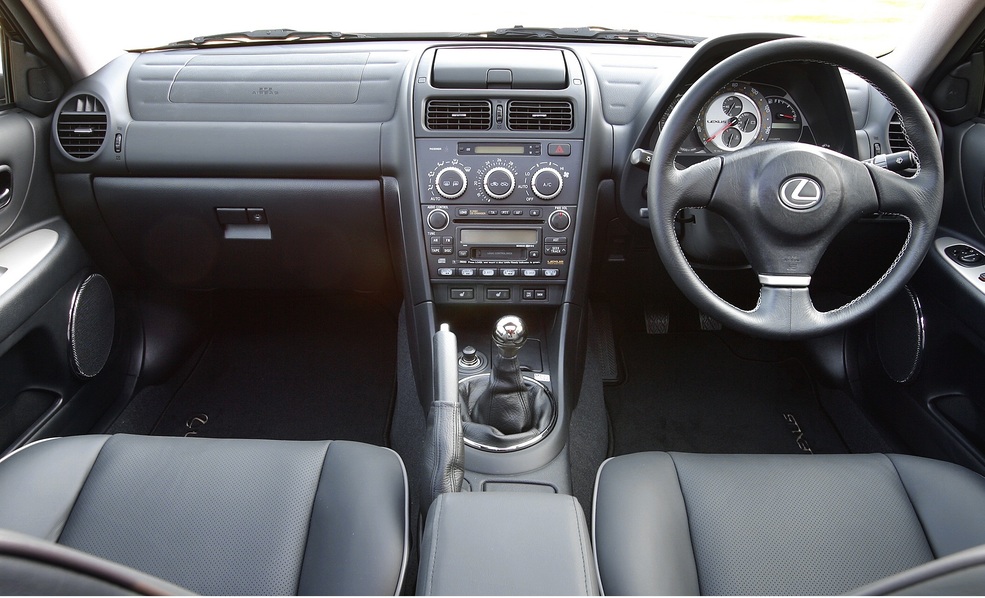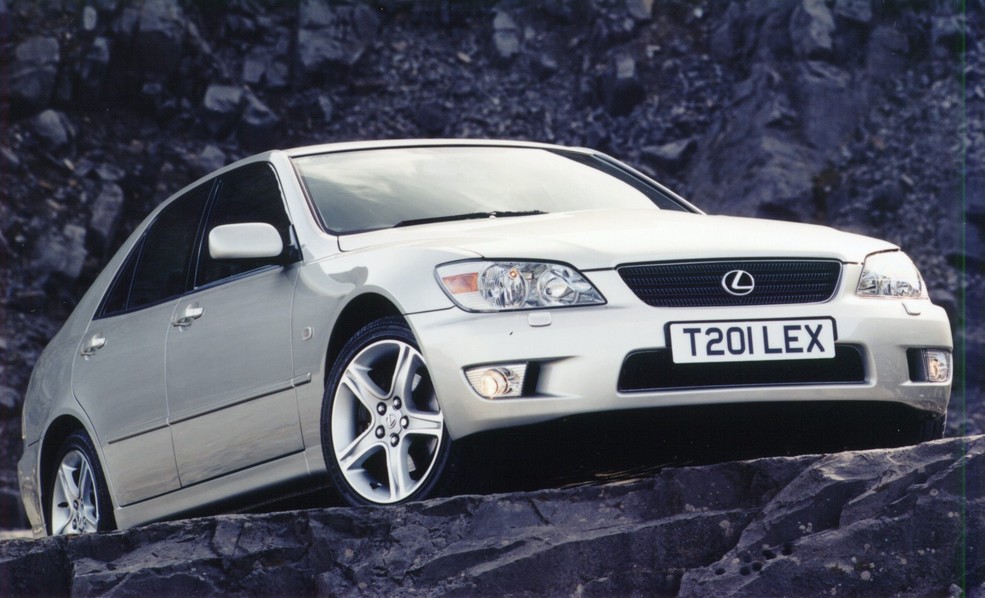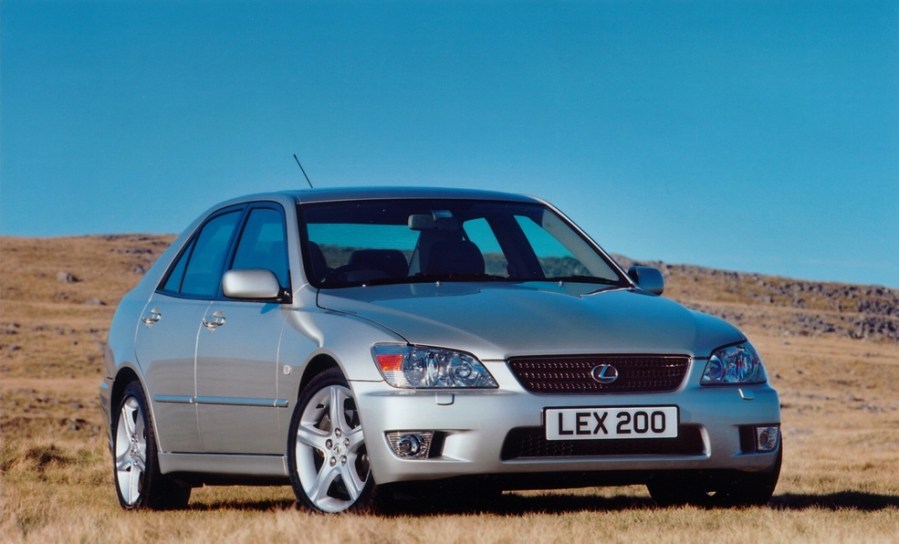Lexus’ idea of upsetting the applecart was to place the IS200 directly against the BMW 3 Series – and today, it’s approaching modern classic status. Here’s what to look out for
While BMW was dominating the compact saloon/coupé market, Lexus decided that it too could get in on a slice of the action and did so with the introduction of the IS200 in 1999. Just as with its other models of the period, the IS200 was essentially a Toyota and sold as such in its native Japan as the Altezza from 1998 onwards.
The drive behind the IS200 was to change the public perception of Lexus in export markets, which so far had been synonymous with large luxury limousines like the LS400. The new, sportier model helped Lexus to position its technologically advanced products against small executives like the BMW 3 Series.
Three models arrived during its launch: the S base model, the SE luxury trim level and of course the Sport option. All cars were almost identical visually and were of course mechanically identical, so choosing between the three was really down to your preference and of course budget.
Featuring a 2.0-litre, six-cylinder engine and rear-wheel drive, it combined practicality with driver-focused interest to help tempt buyers away from all-conquering German rivals. It wasn’t until 2001 that we received the bigger 3.0-litre 2JZ-GE engine derived from the GS300, which then offered better performance alongside the winning executive image.
The designers spent a great deal of effort making the IS200 look the best it could do, using some trickery to make the car look bigger than it was. In fact, it was 71mm shorter, 5mm lower and 19mm narrower than the 3 Series, but the squatter appearance helped beef it up. With short overhangs over the front wheels and large wheels, the IS200 carried a neat but muscular look to its appearance similar to its BMW arch rival.
Paying close attention to the dimensions, it’s no secret that once you’re inside you realise that the car is smaller than a 3 Series, particularly for rear-seat passengers. The boot space is smaller too, which is something to consider when deciding between the two.
The whole Lexus experience isn’t lost though, as inside the cabin you’ll find a whole host of creature comforts that owners of bigger Lexus models are used to. In fact, as standard it came remarkably well-equipped, including climate-controlled air-conditioning, six-CD autochanger and a sophisticated traction control system. As it’s a rear-wheel drive car, the Sport version received a limited-slip differential.
With all this being said though, the Lexus somehow lacked the charisma of the 3 Series – and its widespread appeal. Without the introduction of either a four-cylinder, more economical variant of the Lexus or a true out-and-out performance car in the M3 mould, BMW was left to reign above by covering all bases.
It’s worth noting here that the Lexus IS200 is one of those cars that genuinely has little go wrong with it. Lexus spent a great deal of time focusing on the engineering side of things and as a result obvious, common problems are hard to come by. That being said, there are a few niggles that can occur, like any car, and the usual things to look out for apply here.

Bodywork
The windscreen is also a cause for concern, with leaks being reported around the heater cable from the bottom part of the glass. This can in turn fry the main relay/control board, which could be a £500 repair bill. Check with the owner to see whether the screen was replaced with a Pilkington replacement, which fixes the problem.
Signs of water being let in will be dampness around the corner of the dash fitting or if the owner has ever had problems with lights remaining on when switched off or with locking/alarm functions.
With the earliest cars approaching 20 years old, the body can start to suffer from rust, so check around the wheel linings, around the sills and behind the rear bumper for potential problem areas. Rust isn’t a known issue, but should cars have been used daily, particularly through the winter, the salt on UK roads can be problematic over time.
While checking underneath, try and look at the exhaust which is stainless steel – or at least will be if it’s a standard part.

Engine and transmission
Make sure you check the vehicle’s history that servicing and maintenance has been carried out regularly and that it hasn’t been involved in a crash in any way shape or form. That being said, car park dings etc are commonplace, so as long as the damage has been rectified and there are no underlying problems, this shouldn’t be an issue.
The spark plugs have a 100,000-mile lifespan and if the car is over this threshold, check to see if they’ve ever been replaced. They should have been done with major servicing, but not all owners will have done this.
Owners have noted that regardless of time, the clutch will begin to judder without warning signs. For whatever reason, replacement clutches haven’t fixed this problem long-term, and it again will be a pain later in life.
It’s not something to walk away from, however – if a car has had the clutch replaced relatively recently, you should hope that the problem won’t return immediately.

Interior and trim
This next point also seems odd, but owners have claimed it to be a real pain: check to make sure the driver’s floor mat has the correct clips in place as there was an original recall on early cars due to the accelerator pedal sticking once the mad had slid forward.
Another point to check is the inner left wall of the boot for signs of water. Cars fitted with sunroofs have the runoff drain running past here. If the drain blocks up, water can collect in the boot well and in the worst case form a puddle of water. If condensation builds up towards the rear of the car, it could be a sign that the drains are blocked.
It is important to note that not all IS200s were fitted with ISOFIX points as they were an optional extra on early models. If you’re looking for your next family car and require fixing points, make sure you check with the owner whether it is fitted or not. Following the facelift in 2001, ISOFIX points became standard.
While inside you should also check to see if the radio works. It has a six-CD changer so make sure all the discs can be loaded and removed easily. Error 3 is a common issue as well as misfeeding, if this is the case, the unit may need replacing entirely.

Transmission, steering and brakes
Make sure you take all cars for a test drive before handing over any money and pay close attention when braking. The front caliper sliding pins and lower piston have a tendency to seize. You’ll likely have to replace the caliper if this is the case, so beware.
Another point to mention with the brakes is to listen out for a scraping noise from the rear. If the discs have been replaced with OEM parts, the inner lip can rub on the inner backing plate, but Lexus rectified the problem by grinding the plate back. If you hear a rubbing noise, you may have to get it ground down, or think about replacing them with aftermarket discs.
Inner tyre wear isn’t uncommon due to factory camber settings, but this shouldn’t be excessive. Signs of excessive inner tyre wear will point towards too much negative camber and an underlying problem here.
That being said, some cars have been modified over the years due to the 200 being a firm favourite with the modified community. Some may have had ridiculous levels of negative camber installed, so check to make sure that modifications haven’t extended elsewhere with the car.
Front balljoints have been known to fail a lot, so check to see whether the owner has had these replaced in the past. If not, have someone inspect the areas to make sure they’re OK.

Lexus IS200: our verdict
Japanese saloons from the early 2000s are hot property at the moment. Enthusiasts of Japanese car culture latch onto cars like the IS200 for their combination of rear-wheel drive and powerful engines: a perfect recipe for track work or drifting. However, as a sensible alternative to a BMW 3 Series, the IS works best as a daily modern classic.
The parts arena is well served by aftermarket companies, so obtaining parts won’t be too hard. Above all, be thorough with the history and make sure maintenance has been adhered to. Other than the points noted above, you needn’t be too concerned with high-mileage examples.






